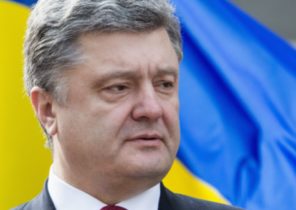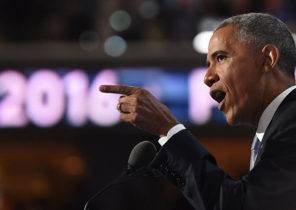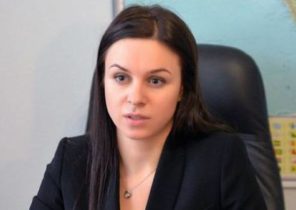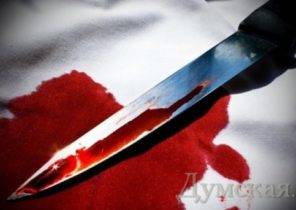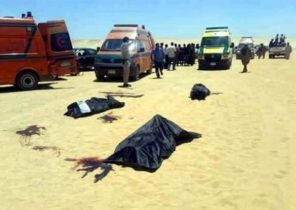iriya, with a population of 22 million in 2011, is in a state of war for over 9 years. Constant bloodshed, massacres, unspeakable barbarism, the desecration of corpses, attacks on hospitals and schools, gas attack against the civilian population. Hundreds of thousands of dead, refugees, millions in exile, hundreds of thousands under torture in prisons, kidnapping, confiscation of property, murder of religious minorities, kidnapping and elimination of dozens of journalists and activists of humanitarian organizations.
Syria was in the zone of instability. To understand everything, just look at the list of affected countries: Afghanistan, Yemen, Iraq, Egypt, Lebanon, Bahrain, Libya, and Somalia. In the area of regional rivalry of Saudi Arabia and Iran. With radical Islamist groups. The problem is divided into several countries Kurdish people.
Millions of videos, press articles, expert reports and reports of journalists provided a wealth of information. But how did it come to this? How did this war? Who are the warring parties? As the country with the elite artistic environment and developed civil society plunged into war?
At the end of the Second world war, Syria was governed by France under League of Nations mandate, the predecessor of the UN. Then was formed a parliamentary Republic, which was destroyed by the military coup of 1949. In 1954, a popular uprising established the parliamentary regime, and then created a Alliance with Egypt in the United Arab Republic. In 1963 there was a coup of the Baath party, and seven years later all the power picked up by the Minister of defence Hafez al-Assad. He remained President up to his death in June 2000. Was succeeded by his son Bashar al-Assad. He was re-elected in 2007 and 2014.
The government of Hafez al-Assad relied on the sole power of the Baath party and the socialist system of land reform, collectivization and nationalization. He was supported by the peasants and the petty bourgeoisie. In recent years in power, Hafez al-Assad made a number of steps toward some liberalization of the economy. His son Bashar has formed a neo-liberal system, with the privatization of the economy and attract foreign investment. In 2007, 70% of the economy generated by the private sector. Private been including banks and universities. All of these changes, of course, played into the hands of close to power, the major clans and the party. So, one of the family members of the Assad controlled mobile communications, duty-free outlets, Bank, import of cigarettes, waste collection and oil refining. All these riches largely bypassed the poor and middle classes. On the background of resettlement of people from rural areas in some regions, the shortage of schools, hospitals and public services was just egregious. The formation of government jobs, which helped to reduce unemployment was on the decline. Add to this the decline of revenues from the sale of oil and the arrival of a million Iraqis because of the crisis in their country. While the Syrian elite, which used imported goods and studied abroad, did not hesitate to put their luxury on display. Close to the government, intellectual circles were critical about the political system. The election was not a real fight, because they were only allies of the Baath party. Through harsh repression in the 1980-ies of the left-wing parties were divorced from reality. The regime controlled the trade unions, and associations.
Syria emerged from this mosaic of ethnic and religious groups: Sunni Arabs, alawites, Kurds, Christians, Druze, Ismailis, Turkmen, Shiites, Circassians, Yazidis, and Armenians. None of them lack a clearly defined territory. As they say in Syria, the Christian fears or even despises the Muslim, Allawi feels resentment from Sunni who despises him and considers a wild Highlander, and the Ismailis had the feeling that they are besieged by alawites. Formed around the Assad family, the ruling elite of the country came from the Alawite menshinstva, which are not recognized by all Sunnis. The Assad clan has always tried to integrate all communities in the government system of secular Syria. The split in Islam between Shiites and Sunnis was dozing in Syria, where the latter form the majority. The Syrians appealed to the Shia who came into the country of Iranians, so that in 2008, the Sunnis demanded the authorities to begin with this struggle. Assad himself is married to Sunnite.
This split could escalate at any moment.
What started the war. Find out where the roots of revolution and rebellion? 17 Feb 2011 in Damascus was marked by acts of police violence. The Ministry of internal Affairs apologized. March 13 in Daraa in the South, 15 teenagers were detained by security forces for graffiti critical of the regime. The police treatment was rough. On 25 April in Dar’a joined the army.
From this moment throughout Syria went mobilization with reliance on the Internet and in particular social networks, Skype and Facebook page “the Syrian revolution”. In 2011, in Facebook there were 300,000 “friends”, and in 2014 — 940 000. The situation was affected by Arab spring. In January ousted President Ben Ali of Tunisia. “France 24”, “Bi-Bi-si”, “al-Jazeera” and “al Arabiya” were covering these demonstrations. They collected hundreds of thousands of people for several months. First appeared on the streets of the informal group, and then movement activists. 29 July was formed the Free Syrian army abandoned the government officers-deserters. From the very beginning, traced the opposition to the regime, regardless of potential concessions. 15 teenagers were released, and the governors were removed from office. The result is not given.
The most common slogan was “Allah Akbar!”, which symbolized the fight against the atheistic power in the predominantly Muslim country. The cry was: “Allah, Syria, freedom!”. Weekly posters were taken by voting on Facebook.
On 13 August the national army bombarded the neighborhoods of Latakia. In Aleppo in the North of the demonstration included people from poor and wealthy districts, Sunnis, Christians and Kurds. For the most part they were men, but walked behind and women.
2 October in Istanbul, was formed opposition Syrian national Council. All the demonstrations were broadcast on YouTube and on the information channels of the Persian Gulf.
At the end of 2011 began to gain momentum the armed struggle. Bashar al-Assad began to use the security forces and the army. He also relied on the assistance of Iran and Russia, but has faced criticism from Arab allies.
The Syrian government has increased salaries, they launched a plan to combat unemployment, beginning a series of works on solving problems with water supply. To satisfy Muslims, it allowed teachers to wear the niqab. Management has launched a religious channel and held meetings with the elite of various tribes.
In September 2012 the government was even allowed to spend in the Damascus conference of the national coordination Committee for democratic change. However, he failed to rectify the situation. The result is a real repressive system with the participation of the security services. Demonstrators detained and released after threats. Repression has become militarized.
In zones of fighting with the rebels carried out the bombing: Latakia, Hama, Dara’a, Aleppo, Rastan and Guta. The protests have gone underground. In April 2012, all eligible for military service of men called in the barracks. Acts of violence became more frequent and by the demonstrators.
The government has granted citizenship to Syrian Kurds, in agreement with the Kurdistan workers ‘ party. Authorities have formed a local armed groups of alawites, Druze and Christians. The Sunnis who attacked close to power of the alawites, has called Islamic terrorists. Mode is increasingly closer to the Shiites and Iran.
In July 2012 the battle for Damascus with the onset of the rebels, who were supported by the Gulf countries and the West. This was followed by an offensive in Aleppo under the command of refuge in Turkey, the officers of the deserters of the Syrian army. The failure in both cases.
21 Aug 2013 the government staged the gas attack in ghouta. It is worth remembering that the first U.S. Secretary of state Hillary Clinton believed the Bashar al-Assad a reformer, but President Obama subsequently drew a red line, which he was not supposed to cross. The American leader still refrained from bombings, the decision could be taken after a chemical attack.
In 2013, the rebels controlled areas in the North and South of the country, as well as several areas around Damascus and North of HOMS, but in the fall of 2014 the regime of Bashar al-Assad has won most of the positions. The internal struggle of the motley opposition has seriously weakened her, and disorganization of the country was reflected in the everyday lives of Syrians: the relocation, threats, loss of communication, the collapse of production. The state could no longer stabilize relations among religious and ethnic groups.
The civil service has stopped working. Officials, judges, engineers and police had fled the fighting. Food, electricity, water, gas and fuel has been violated. Schools and hospitals closed.
Among the rebels there was no hierarchy. They were not a real political group. People moved from one movement to another. In uncontrolled government areas, activists have created new, decentralized and heterogeneous institutions. Was introduced Sharia together with the code of the Arab Union, established in 1996 by the League of Arab States. To work in rebel areas, lawyers and judges needed to confirm their religious knowledge.
Civil posts were occupied by people without any legal education. In the Free Syrian army weapons come from everywhere: from Iraq, Turkey, Lebanon, Jordan. The money came from Gulf countries and the West. Military coordination was conducted from Turkey. The Syrian national Council is poorly coordinated with the municipalities. The commanders did not coordinate actions. A former criminal who was smuggling cigarettes from Turkey, declared itself the leader of Katiba and began to exploit its controlled region. Some armed groups have formed their own police and courts, took in hand the morals, education, mosques, medical services and delivery of commodities. The rebels resold to each other captured by the army weapons. The new officers were a minimum of training in criminal matters and the handling of weapons. The Syrian government continued to pay salaries, even in rebellious areas in order to maintain continuity and employees who, by the way, often without batting an eye, moved to the side of the uprising.
Foreign influence has increased the split. USA, France, Saudi Arabia, Qatar, Turkey and Britain supported the uprising in contrast to Iran and Russia, which has long existed a major military base in Syria. The local administration and humanitarian aid is also mostly funded by the West and its allies.
Millions of Syrians have fled to neighbouring countries: Lebanon (a quarter of the Syrian population at the end of 2014), Iraq, Jordan, and Turkey. Refugees became half Syrians. At the end of 2014, the country ran 5 million people, including one million in Europe via Turkey. Thousands of foreigners, including Europeans, went to Jihad in Syria.
From September 2013 to October 2014 the OPCW were doing in Syria with the elimination of the most hazardous chemicals. Syria was destroyed and dismembered the country. Eventually gained the upper hand radical ideology. In June 2014 Islamic state* proclaimed a Caliphate in the territory it controls in Syria and Iraq. He became the capital of raqqa.
How things have moved on from the motley uprising against the regime of Bashar al-Assad to Islamic state* with the threat to Syria and neighboring countries? IG* did not appear suddenly, but it is worth remembering that in the height it occupies in Iraq and Syria, an area the size of Italy. In this area, for it had fertile soil.
First of all, Syria has long existed Salafi Islamist groups, which sought an Islamic state and Sharia. They never once tried to merge, but to no avail. The most significant of them, “Dzhabhat EN-Nusra”*, was formed in January 2012 but split in March 2013 under the influence of the Emir of ISIS* in Iraq, Abu Bakr al-Baghdadi. He was, incidentally, eliminated as a result of us operations in Syria in October 2019.
“Dzhabhat EN-Nusra”* differed centralized command, prepared for the underground struggle footage, published online a video of military operations, suicide attacks by the police, own courts, which rivaled the legal authorities of the Syrian rebels.
In April 2013 the “Islamic state of Iraq and the Levant” merged part “Dzhabhat EN-Nusra”, and in June 2014 a Caliphate was presented to all Sunni Muslims. At first the movement did not have a clear site, but it took control of leading in Turkey roads to block the supply of the Free Syrian army. IG* also captured the point of production and storage of Western humanitarian aid in Northern Syria. It then expanded its influence to Raqqa (the first capital of the uprising) and Aleppo.
In January 2014, raqqa fell that became a symbol of the rise of ISIS*. From 2014 to 2015 small armed groups were absorbed by the movement.
Indoctrination reached a climax. Islamic state* took advantage of all who are abandoned to their fate in Syria. This was the revenge of the poor. Foreign fighters come from everywhere: from the Caucasus, Morocco, Lebanon, Egypt, Tunisia and Europe. In raqqa, was the Syrian rebels, but the greater number arrived from abroad. There was also support combat engineers, doctors and technicians from abroad.
Sharia meant a complete lack of consultation with the population. Elections were banned as contrary to the Islam concept. Went in the course of beheading, hanging, chopping off the hands of thieves. During prayers it is forbidden to walk on the street. Women were obliged to wear the veil and could leave home only accompanied by his father, brother, husband or son. Used to smoke a lot of Syrians forbidden to do. 20 lashes for a cigarette. TV and music were also banned. No music ringtones! The school took the English classes, history, geography and natural Sciences.
“Islamic state”* led a war with the Syrian rebels and at first avoided the fights with the troops of Bashar al-Assad, with whom it was harder to fight.
For what happened in Syria and Iraq was followed by the proclamation of the provinces in Libya, Egypt, Yemen, Saudi Arabia, Afghanistan and Pakistan.
To end with IG*, it took a sporadic but active actions of the Syrian free army, the international coalition led by the US, the army of Bashar al-Assad and his allies, including Russia. In March 2019 IG* was defeated.
To date, the Assad regime has regained much of Syrian territory. Anyway, the war in the country is for 9 years and GDP fell by 60% from 2011 to 2013. In 2010, the state debt amounted to 23% of GDP, while 2014 came out at around 126%. The country has collapsed along with the inter-communal balance that had supported the regime of Bashar al-Assad on political criteria. The account goes on millions of refugees and thousands of dead, against the civilian population was used asphyxiating gas. The world is still there. Allies of the regime and the opposition are in opposition with occasional truces.
* a terrorist organization banned in Russia
